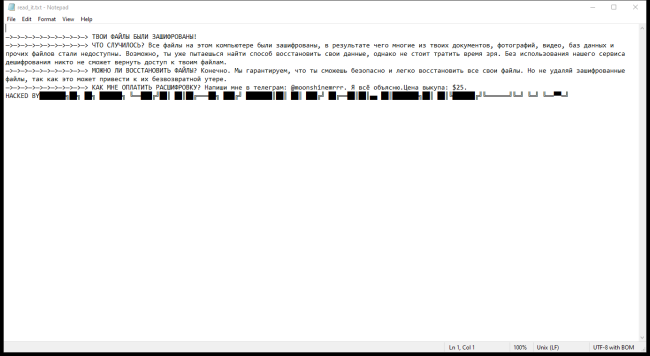What is ZHO Ransomware?
ZHO Ransomware is a type of malicious software that encrypts files on a victim’s computer, rendering them inaccessible. It typically infects computers through phishing emails, malicious downloads, or exploiting vulnerabilities in software. Once a computer is infected, ZHO Ransomware adds a specific file extension to encrypted files, making them easily identifiable. The ransomware uses advanced encryption algorithms to lock the files, making it nearly impossible to decrypt them without the decryption key.
When ZHO Ransomware infects a computer, it creates a ransom note that usually appears on the desktop or in folders containing encrypted files. The note typically demands payment in cryptocurrency in exchange for the decryption key. Unfortunately, there are currently no decryption tools available for ZHO Ransomware. However, it is still possible to decrypt some random files by using data recovery software or searching for backup copies of the affected files. It is always recommended to regularly backup important files to prevent data loss in case of a ransomware attack.
Ransom note:

read_it.txt contents:
—>—>—>—>—>—>—>—>—>—>—> ТВОИ ФАЙЛЫ БЫЛИ ЗАШИФРОВАНЫ!
—>—>—>—>—>—>—>—>—>—>—> ЧТО СЛУЧИЛОСЬ? Все файлы на этом компьютере были зашифрованы, в результате чего многие из твоих документов, фотографий, видео, баз данных и прочих файлов стали недоступны. Возможно, ты уже пытаешься найти способ восстановить свои данные, однако не стоит тратить время зря. Без использования нашего сервиса дешифрования никто не сможет вернуть доступ к твоим файлам.
—>—>—>—>—>—>—>—>—>—>—> МОЖНО ЛИ ВОССТАНОВИТЬ ФАЙЛЫ? Конечно. Мы гарантируем, что ты сможешь безопасно и легко восстановить все свои файлы. Но не удаляй зашифрованные файлы, так как это может привести к их безвозвратной утере.
—>—>—>—>—>—>—>—>—>—>—> КАК МНЕ ОПЛАТИТЬ РАСШИФРОВКУ? Напиши мне в телеграм: @moonshinemrrr. Я всё объясню.Цена выкупа: $25.
HACKED BY███████╗██╗ ██╗ ██████╗ ╚══███╔╝██║ ██║██╔═══██╗ ███╔╝ ███████║██║ ██║ ███╔╝ ██╔══██║██║▄▄ ██║███████╗██║ ██║╚██████╔╝╚══════╝╚═╝ ╚═╝ ╚══▀▀═╝
How Ransomwares Like ZHO Ransomware Ends Up on Users’ Computers:
Ransomware employs various methods to infect computers, exploiting vulnerabilities in both software and human behavior. One common tactic involves malicious email attachments or links, where unsuspecting users inadvertently download and execute the ransomware payload. Additionally, attackers may exploit software vulnerabilities, exploiting security flaws in outdated systems or applications to gain unauthorized access. Another avenue is through malicious websites or ads, which can silently install ransomware when visited. Furthermore, ransomware can spread through networked devices, leveraging weak passwords or unsecured connections to infiltrate entire systems.
- Remove ZHO Ransomware Automatically
- Back up Your Encrypted Files
- Decrypt random Files
- Restore random Files With File Recovery Tools
- Recover Encrypted Files From Shadow Copies
- How to Protect Your PC From Malware and Prevent Ransomware Infections In the Future
Remove ZHO Ransomware
First, we advise you to scan your computer with an antivirus to find and remove all remaining instances of ZHO Ransomware.
Other anti-malware software that may be able to get rid of ZHO Ransomware:
Norton (Windows, macOS, iOS, Android) The link may not work correctly in some countries.
Malwarebytes (Windows)
Back up Your Encrypted Files:
We advise you to create a copy of the encrypted files and put it away. That might help you if free ransomware decryptor becomes available in the future, or if you decide to pay and get the decryptor but something goes wrong and files get irreparably damaged in the process of decryption.
Decrypt random Files:
Most ransomware use very complex encryption methods. Only the creators have the special key needed to unlock the files. Without this key, it’s impossible to get the data back. Usually, the hackers keep these keys on their own servers, not on the infected computers. Some ransomware is so well-made that it’s almost impossible to recover files without the hackers’ help. But some are not so good and have mistakes, like using the same key for everyone or keeping keys on the infected computer. That’s why it’s a good idea to look for tools to unlock your files if you get hit by ransomware. You can use NoMoreRansom site to find if a specific decryption tool for ZHO Ransomware exists.
Restore random Files With File Recovery Tools:
Screenshot:

About Stellar Data Recovery
- Retrieves data from formatted, encrypted, or corrupted drives.
- Free trial version allows user to scan, preview and download up to 1GB of data.
- Supports Windows 11, 10, 8 and 7. A Mac variant is also available.
Recover Encrypted Files From Shadow Copies:
Shadow Explorer is a free tool designed to access Shadow Volume Copies in Windows systems. It allows users to retrieve previous versions of files and folders stored in these shadow copies. By selecting a specific disk and date, users may be able to recover lost or overwritten data. Download and install the latest version of Shadow Explorer, or opt for the portable version.
- Launch Shadow Explorer.
- On the top left part of the window pick a disk (C:\, D:\, etc.) and a date when a snapshot of files was captured.
- To retrieve file or a folder, right-click on it and select Export.
- Select the destination where you want to store the files
How to Protect Your PC From Malware and Prevent Ransomware Infections In the Future:
- Keep software updated: Regularly update your operating system, antivirus software, and other applications to patch security vulnerabilities.
- Use antivirus and anti-malware software: Install reputable antivirus and anti-malware programs to detect and remove ransomware threats.
- Enable firewall: Activate and properly configure a firewall to monitor and block suspicious network traffic.
- Backup data regularly: Create and maintain regular backups of important files and data on separate storage devices or cloud services to mitigate the impact of a ransomware attack.
- Exercise caution with email: Be cautious when opening email attachments or clicking on links, especially from unknown or suspicious senders.
- Stay informed: Stay up-to-date on the latest ransomware threats, tactics, and prevention strategies to adapt your defenses accordingly.
